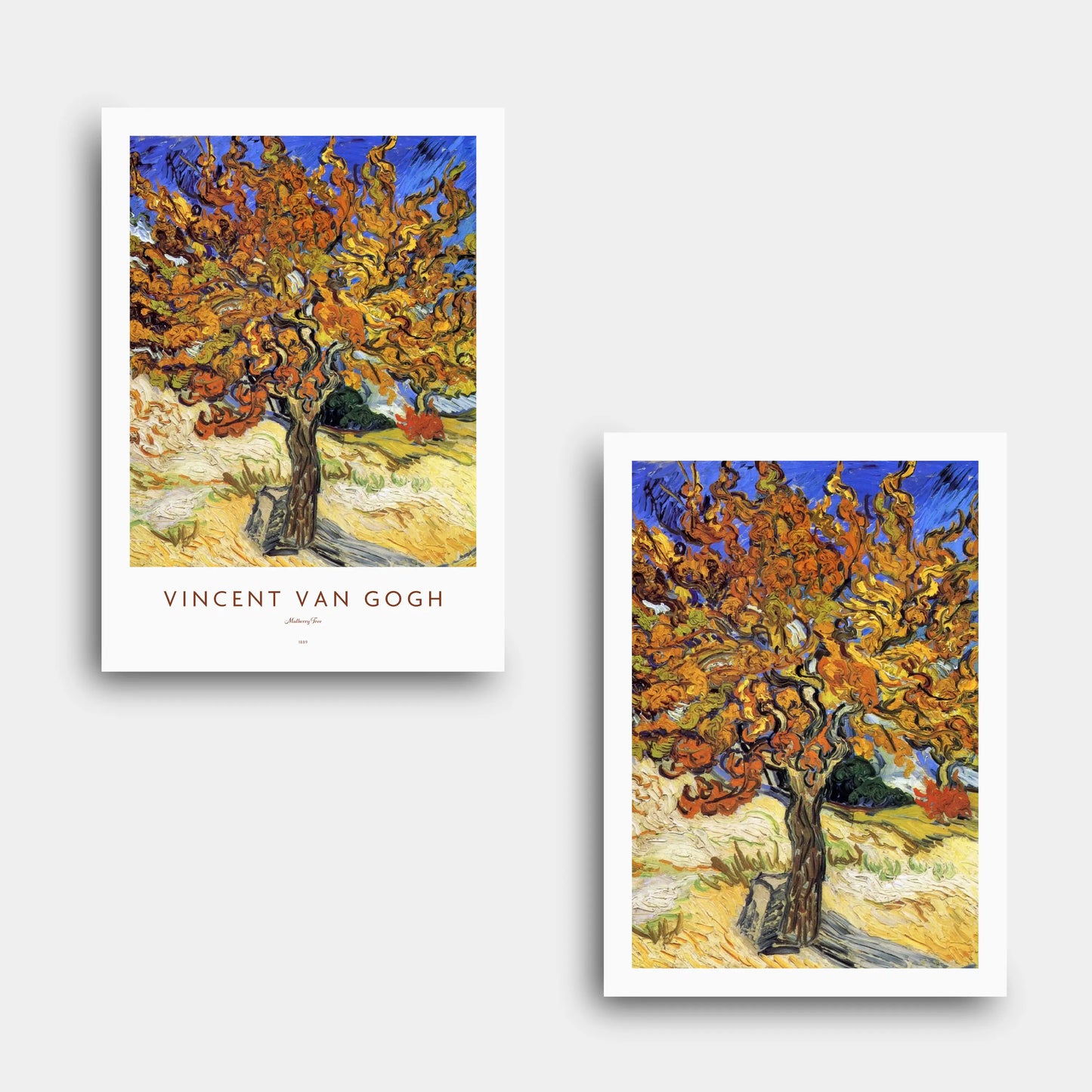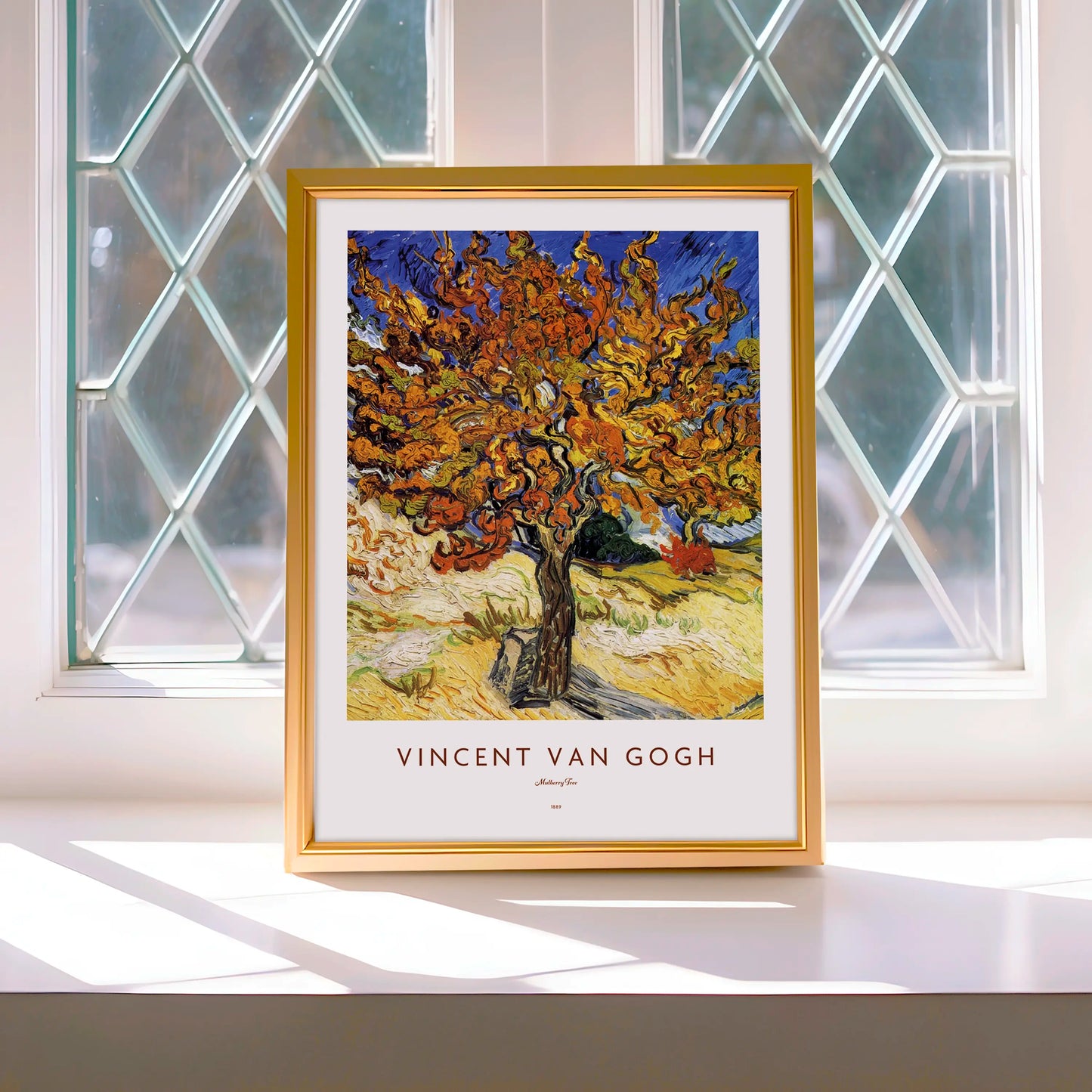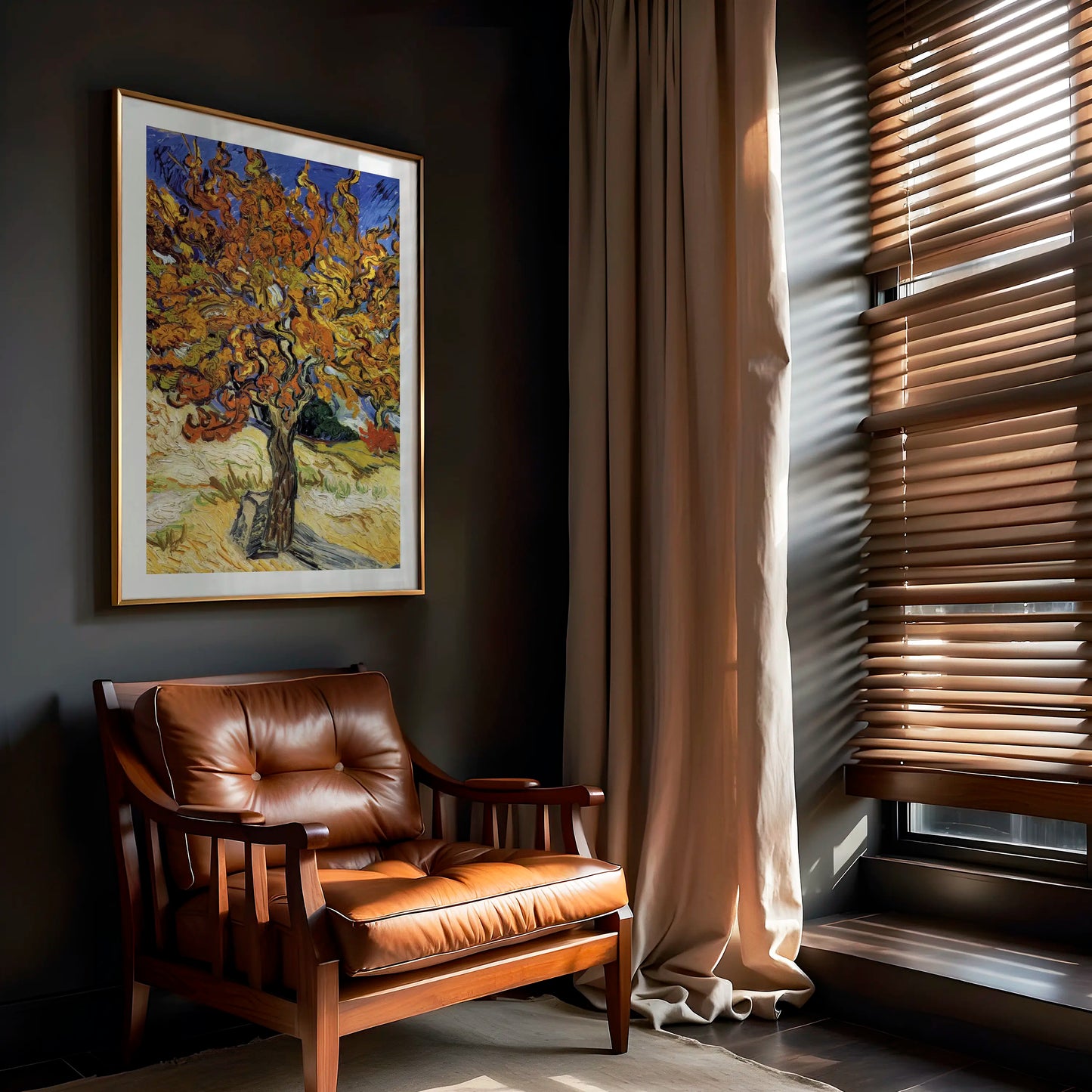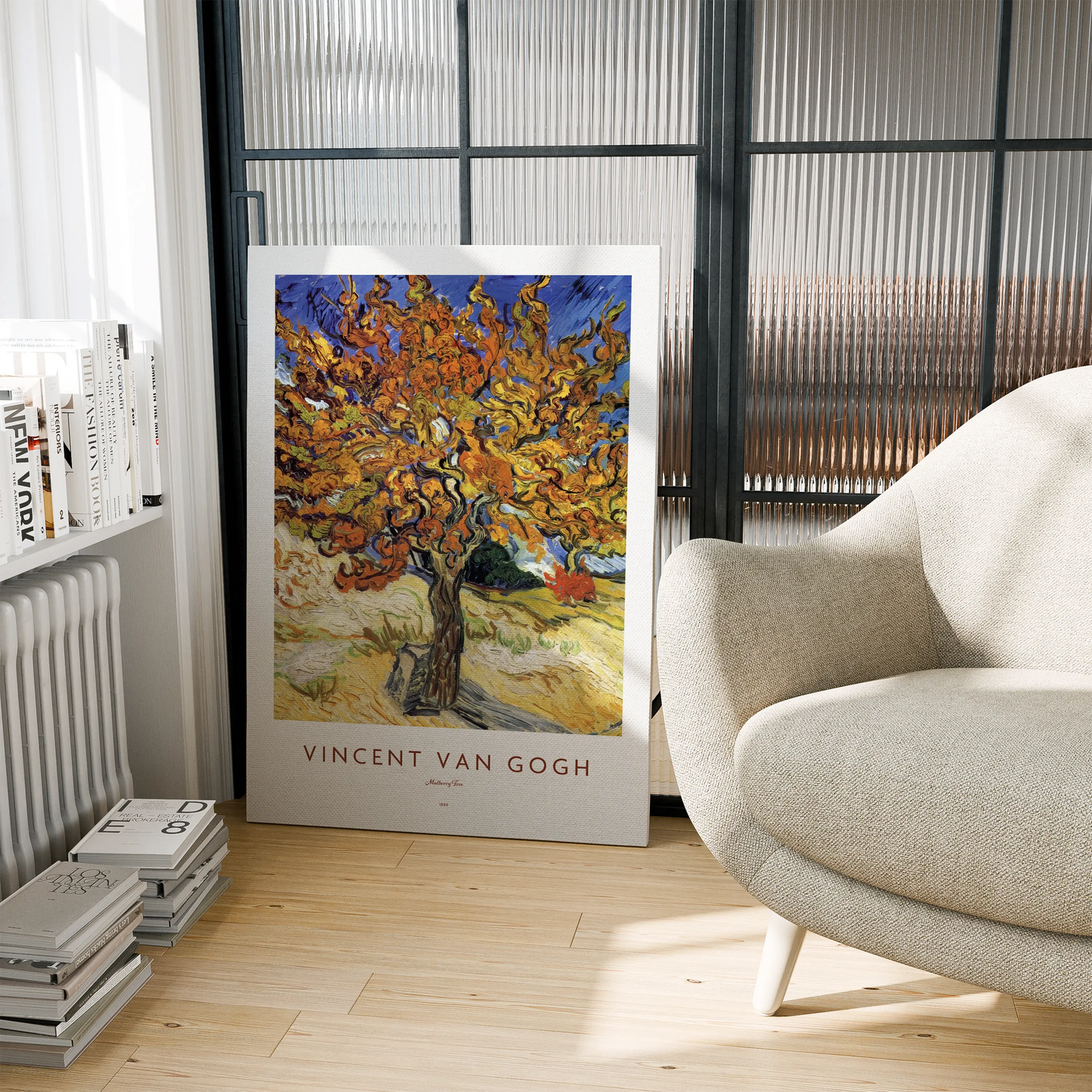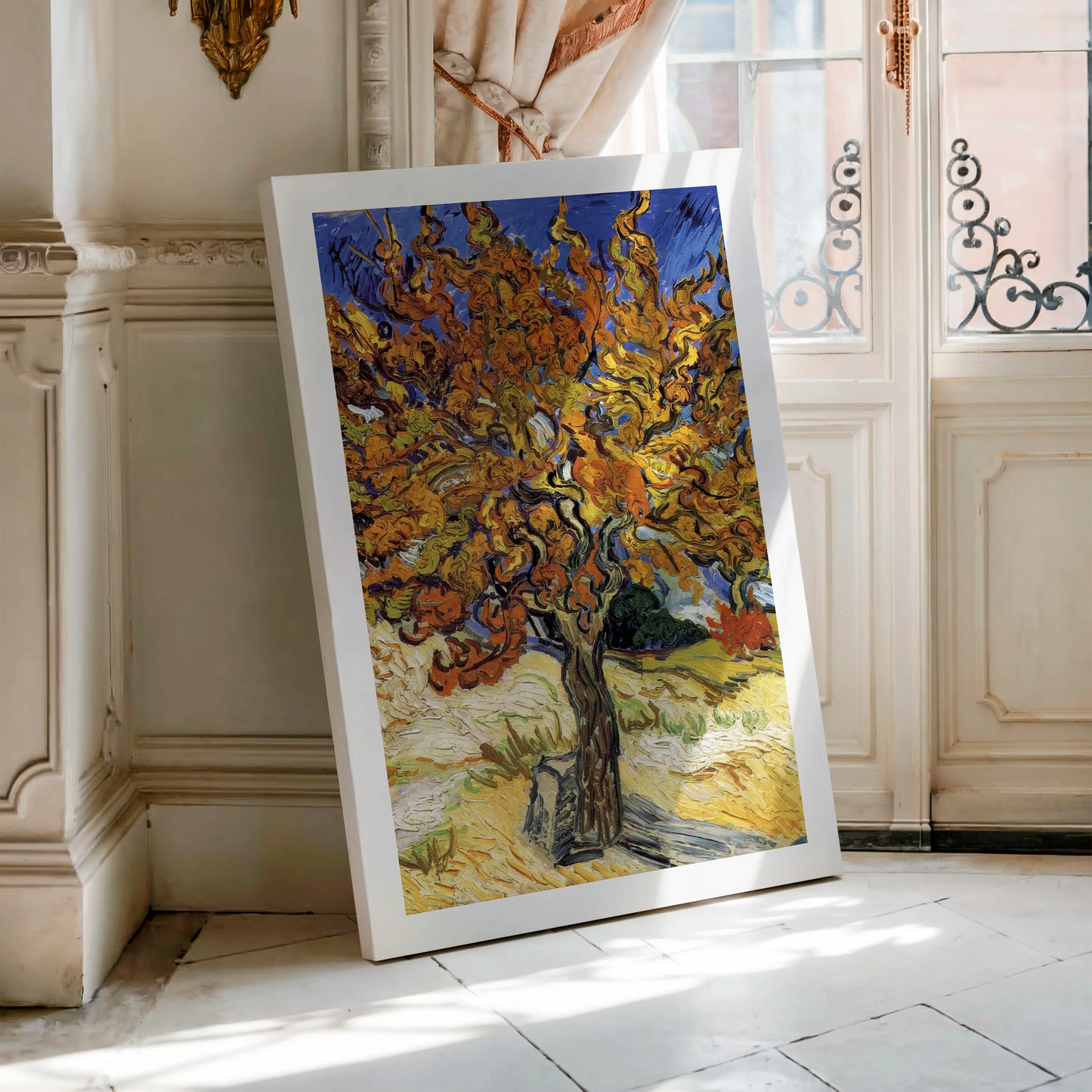Vincent van Gogh - Mulberry Tree (1889) - Digital File N212
Vincent van Gogh - Mulberry Tree (1889) - Digital File N212
Couldn't load pickup availability
Share
Paper Poster | Canvas Print | Digital File
1. Historical and Artistic Context
Vincent van Gogh painted The Mulberry Tree in October 1889 during his stay at the Saint-Paul-de-Mausole asylum in Saint-Rémy-de-Provence. At this time, he struggled with mental illness but found solace in painting the surrounding landscape. Autumn in Provence offered him vivid natural subjects, and the mulberry tree became one of his favorite motifs. The work reflects both the turbulence of his personal life and the creative energy that defined his final years.
2. Technical and Stylistic Analysis
The composition is dominated by the fiery orange and yellow foliage of the tree set against a vivid blue sky. Van Gogh used swirling, thick brushstrokes to create dynamic movement, giving the branches a flame-like quality. The trunk is twisted and strong, anchoring the scene. The contrasting colors of blue and orange generate intensity, while the rhythmic lines emphasize vitality. The style is typical of Van Gogh’s late period, merging impressionistic influences with his own emotional and symbolic vision.
3. Symbolism and Interpretation
The mulberry tree symbolizes resilience and transformation. In Provence, mulberries were cultivated for silkworms, which themselves symbolized cycles of life and change. The fiery leaves can be seen as representing both the glory and the fragility of existence. Many viewers interpret the branches as flames, suggesting Van Gogh’s inner passion and struggle. The tree thus becomes a metaphor for strength amid hardship, echoing the artist’s own perseverance during illness.
4. Technique and Materials
Van Gogh painted the work in oil on canvas using impasto, applying thick layers of paint that create texture and depth. His palette is dominated by complementary contrasts—fiery yellows, oranges, and reds against cobalt and ultramarine blues. He likely used coarse brushes to achieve vigorous, expressive strokes. The rapid application of paint conveys urgency, reflecting his emotional state and artistic intensity. Despite his limited resources, Van Gogh’s material mastery created a powerful and enduring work.
5. Cultural Impact
The Mulberry Tree is celebrated as one of Van Gogh’s most striking autumnal landscapes. It has influenced later movements such as Expressionism and Fauvism, inspiring artists like Matisse and Kirchner. Beyond academic circles, the painting has become a cultural symbol of resilience and beauty born from struggle. Its fiery energy resonates strongly with contemporary audiences, often reproduced in books, posters, and digital media, contributing to Van Gogh’s status as one of the most beloved painters in history.
6. Critical Reception and Scholarly Interpretations
Scholars view the painting as a masterpiece of Van Gogh’s Saint-Rémy period. Critics highlight the balance between chaos and structure, the brilliance of color, and the expressive brushwork. Some interpret it biographically, seeing the burning branches as symbolic of the artist’s tormented mind. Others stress its universal message of renewal and endurance. In modern scholarship, emphasis has shifted toward appreciating Van Gogh’s deliberate technique and professional choices rather than reducing the work to his illness.
7. Museum, Provenance and Exhibition History
The Mulberry Tree belongs to the Norton Simon Museum in Pasadena, California. After Van Gogh’s death, much of his work remained with his brother Theo and later Theo’s widow, Johanna van Gogh-Bonger, who played a crucial role in promoting his legacy. The painting eventually entered the Norton Simon collection in the 20th century. It has featured in major Van Gogh retrospectives and continues to attract visitors as a highlight of the museum’s European collection.
8. Interesting Facts
1. Painted in October 1889 during Van Gogh’s asylum stay.
2. Mulberries were cultivated in Provence for silkworm production.
3. Van Gogh admired the autumn colors of mulberries and mentioned them in letters.
4. The fiery branches resemble flames, symbolizing passion and vitality.
5. It shares stylistic similarities with The Starry Night, painted the same year.
6. The impasto is so thick it creates a sculptural texture.
7. The painting is a favorite highlight at the Norton Simon Museum in Pasadena.
8. Van Gogh saw the tree as an emblem of endurance despite harsh conditions.
9. Its complementary colors exemplify his advanced understanding of color theory.
10. The painting helped inspire Expressionist and Fauvist artists in the early 20th century.
9. Conclusion
The Mulberry Tree captures Van Gogh’s genius at its height: a simple tree transformed into a radiant symbol of resilience and inner fire. Painted in a time of personal struggle, it reveals how art could serve as both therapy and triumph. Through bold colors, dynamic brushstrokes, and symbolic depth, Van Gogh elevated a seasonal motif into a universal statement about life’s endurance. Today, the painting remains a beacon of creativity born from adversity, resonating with viewers across generations.
